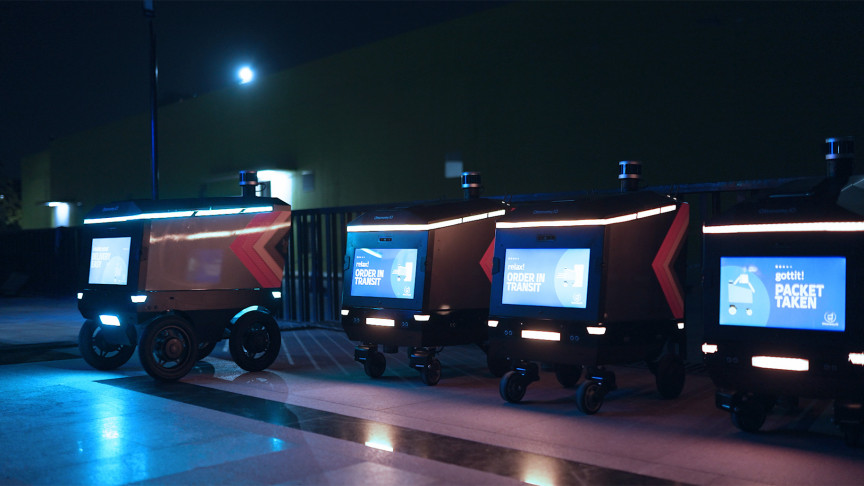While the coronavirus pandemic undoubtedly brought grave hardships to most of us, it has also provided some opportunity for innovation. At this year’s CES 2022, the world’s largest technology show that takes place in Las Vegas, Nevada, the tech startup Ottonomy IO presented tremendous progress in building fleets of autonomous delivery robots. Its machines have already been employed at retail locations around the U.S., with a very real possibility they are coming to a store or drive-through near you soon.
How the robots work
At CES, Ottonomy IO explained how its robot delivery service functions. Once you make an order online through an app, the package you ordered gets placed in a cart-like robot, which navigates to a designated pickup location, which can be quite flexible. After the robot finds you, it scans your phone, then opens up a secure locker inside, allowing you to pick up your package. One major advantage of this human-less process from a Covid-safety standpoint is that the whole interaction is contactless.
The robot is completely autonomous, relying on HD mapping of the environment it encounters with sensors and cameras, able to operate both indoor and outdoor, day or night. The machine can distinguish between people and stationary objects using contextual navigation and situational awareness to make its way through crowds and avoid sudden challenges like a kid running across its path. If the robot is blocked, it can tell people to move out of the way through its large front screen.
Check out this video of how the Ottonomy IO robots make their deliveries:
Inspired by the pandemic
During the presentation at CES, Ritukar Vijay, the founder and CEO of Ottonomy, explained that his company was born in 2020, in the midst of the pandemic. Rather than chase “dreams” like autonomous cars, it saw a need “to solve problems of today’s world” and chose to focus on delivery.
Vijay believes their innovations will help address major service-industry issues with labor shortages. In the past year, Ottonomy claims to have achieved the milestone of being the world’s first robot delivery company in airports. Their robots are currently delivering food, beverages, and retail products in the CBG International Airport in Cincinnati.
Vijay stressed the focus of their developers in ensuring seamless navigation for the robots between indoor and outdoor environments. They have created multiple versions of the robots. Some are configured for places like airports while others are facilitating curbside pickup orders at stores, bringing out goods to waiting customers. The company is focused on scaling their delivery services and expanding the kind of deliveries they make, having the robots venture out into cities. Currently, they are deployed for short distances.

What’s next?
Ottonomy has recently made a partnership with the food service company Presto and looks in 2022 to have its robots operate at 20 to 30 quick-service restaurants. One objective for Ottonomy is to redefine drive-thru’s, which, as Vijay points out, currently offer inefficient and often-vexing experiences.
One of the ways the company tests the robots it designs is by opening offices in places with different environmental factors. It plans to employ them not only in warm areas like California and Texas but it now has an office in New York, which would allow Ottonomy to adapt the service to less-than-ideal weather conditions.
In one juicy piece of tech gossip, Vijay revealed that their robots are also being tested by Walmart. But he was not ready to fully announce when exactly you’d start being served by robots at your local superstore.
One challenge the company is facing is in having to wait for the right regulations to be passed that would allow its robots to drive on city sidewalks and roads. The “technology is there” says Vijay but expects the regulatory processes to take a couple of years.
For those wondering about security, Vijay explained that the robots are made of metal and are difficult to carry and be taken away. Only a customer with a unique QR code can access the packages.
Credit: Source link





















